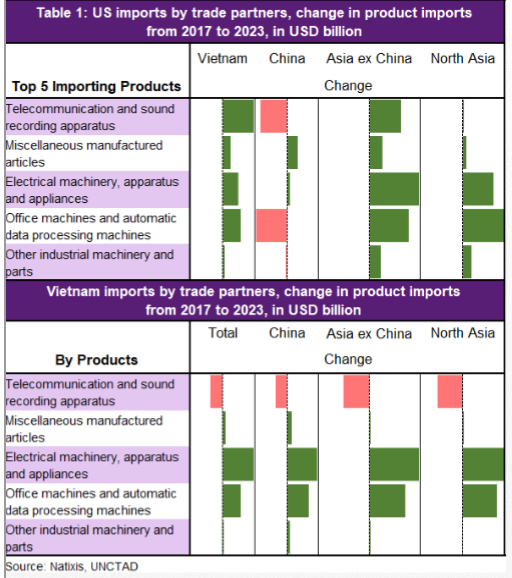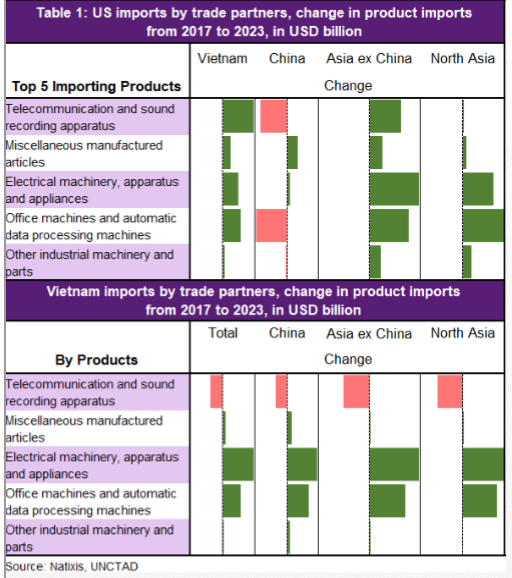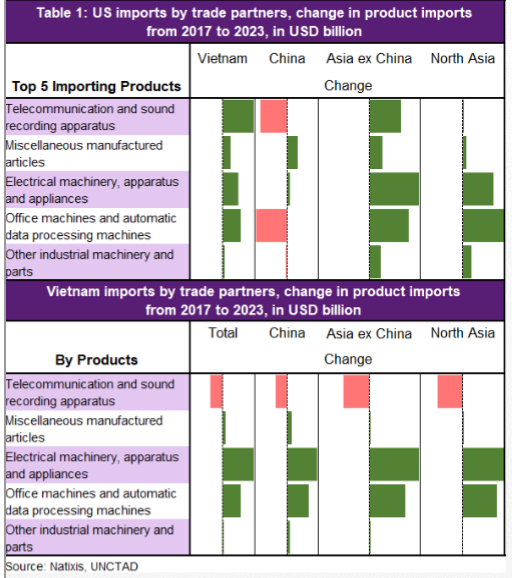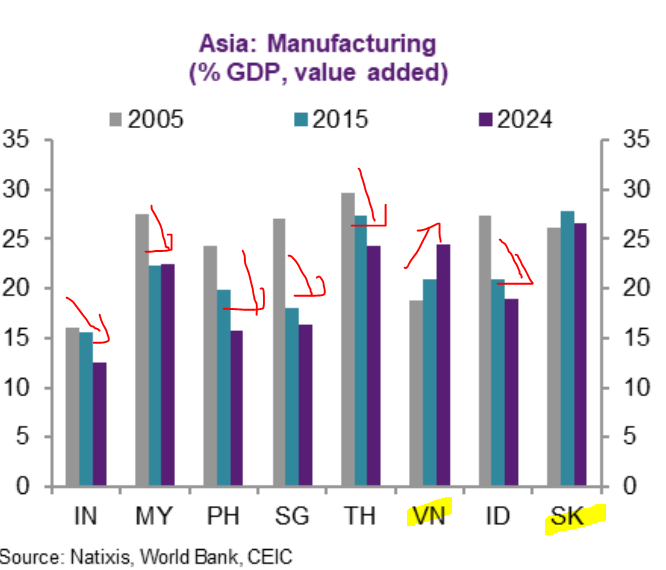Good morning 🌧️🌪️. A typhoon passed through 🇭🇰& it's gloomy outside, just like the mood of markets after:
a) JPO said hedgy words "act as approprioate"
b) Carney speech on the dollar & digital $
c) China raising tariffs to 30% from 25% on 75bn
d) Trump raised 300bn tariffs to 15%
a) JPO said hedgy words "act as approprioate"
b) Carney speech on the dollar & digital $
c) China raising tariffs to 30% from 25% on 75bn
d) Trump raised 300bn tariffs to 15%
https://twitter.com/Trinhnomics/status/1161931098550493184
Facts of tariffs so far:
a) China imports from the US roughly 120bn & tariffed 110bn so got 10bn left & so to ESCALATE it needs to raise the level as volume limited
b) That happened w/ 75bn raising by 5% so items like US crude went from 25% to 30%
c) US imported ~550bn & so far
a) China imports from the US roughly 120bn & tariffed 110bn so got 10bn left & so to ESCALATE it needs to raise the level as volume limited
b) That happened w/ 75bn raising by 5% so items like US crude went from 25% to 30%
c) US imported ~550bn & so far
Events leading to today:
June '18: 🇺🇸25% tariffs on 34b; 🇨🇳 retaliates w/ 25% on 34
Aug '18: 🇺🇸25% on 16b; 🇨🇳 same
Sept '18: 🇺🇸10% on 200b that'll be raised to 25% (1 Jan)
🇨🇳 retaliates w/ 5% on 60b
Truce
May '19: 🇺🇸 raises 10% to 25% on 200b
June '19: 🇨🇳 raises 5-25% on 60bn
June '18: 🇺🇸25% tariffs on 34b; 🇨🇳 retaliates w/ 25% on 34
Aug '18: 🇺🇸25% on 16b; 🇨🇳 same
Sept '18: 🇺🇸10% on 200b that'll be raised to 25% (1 Jan)
🇨🇳 retaliates w/ 5% on 60b
Truce
May '19: 🇺🇸 raises 10% to 25% on 200b
June '19: 🇨🇳 raises 5-25% on 60bn

Not yet tariffed by both sides but WILL starting 1 September 2019, yes this Sunday:
a) 🇺🇸 tariffs on the remaining (see chart 👇🏻) 300bn by 10% that later exempt 156bn (mostly consumer goods till 15 December)
b) China retaliates w/ raising 5% on existing tariffs of 75bn so +5% 👇🏻
a) 🇺🇸 tariffs on the remaining (see chart 👇🏻) 300bn by 10% that later exempt 156bn (mostly consumer goods till 15 December)
b) China retaliates w/ raising 5% on existing tariffs of 75bn so +5% 👇🏻

👇🏻:
c) 🇺🇸 Raising 5% on existing to 250bn to 30% on 1 October 2019.
By 1 October 2019: China tariffs on the US ranging from 10-30% of 110bn of goods & the US got 30% on 250bn of goods & 15% on 300bn of goods (w/ 156bn delayed til 15 Dec)
Basically all of trade b/n US&China 👇🏻👇🏻
c) 🇺🇸 Raising 5% on existing to 250bn to 30% on 1 October 2019.
By 1 October 2019: China tariffs on the US ranging from 10-30% of 110bn of goods & the US got 30% on 250bn of goods & 15% on 300bn of goods (w/ 156bn delayed til 15 Dec)
Basically all of trade b/n US&China 👇🏻👇🏻

d) By 15 December, unless there are efforts to delay tariffs, there will massive front-loading for fear of this happening & guess what?
WE WILL HAVE TARIFFS ON ALMOST ALL OF US CHINA TRADE.
But that never ends there. Watch investment.
WE WILL HAVE TARIFFS ON ALMOST ALL OF US CHINA TRADE.
But that never ends there. Watch investment.
70th anniversary of the People's Republic of China led by the CCP is on, wait for it:
1 October 2019, which is the same date that the 25% of 250bn goes to 30% & obvs a month before on 1 September 15% on 144bn (156bn to be applied on 15 December 19.
About that September talk😬..
1 October 2019, which is the same date that the 25% of 250bn goes to 30% & obvs a month before on 1 September 15% on 144bn (156bn to be applied on 15 December 19.
About that September talk😬..
As a recap: Notice that the "bark" much stronger than "bites" to manage expectations & actions always surprise u w/ lower magnitude but trend is escalation.
Meaning, worst case scenario now new normal & u rejoice when it escalates but less than "bark"👈🏻
Meaning, worst case scenario now new normal & u rejoice when it escalates but less than "bark"👈🏻
https://twitter.com/Trinhnomics/status/1165790713168031744?s=20
As in the 10% to 15% of 144bn of goods on 1 September 19 (15% on 156bn of consumer goods 15 December) & 25% to 30% for 250bn of mostly intermediate goods on 1 October may not be realized, which u'll rejoice but only b/c ur expectations are managed. Don't forget that norms change
Trump: Non-committal in China tariff delay. Told you. He just puts it out there so you price the WORST & then takes a bit away & then when it happens you will think it is GOOD NEWS.
True story. This is what happened since late Jan 2018. SPX futures up 1% vs -1% this morning.
True story. This is what happened since late Jan 2018. SPX futures up 1% vs -1% this morning.
Do you know what happens after every escalation so far for trade-war? Deescalation by both China & the USA (yep, true story), albeit short-term reprieve until it escalates again, kind of like a dance to get to know each other's limit...
Same script still plays to buy time👈🏻
Same script still plays to buy time👈🏻
#Breaking Mofcom's Gao (de-escalating): Trade escalation not good for 🇨🇳, 🇺🇸; 🇺🇸 & 🇨🇳 in effective contact; 🇨🇳won't discriminate against foreign firms; Won't crack down on foreign firms; discussing 🇺🇸 visits in Sept; 🇨🇳 has ample tools to respond but thinks should discuss removal
• • •
Missing some Tweet in this thread? You can try to
force a refresh









